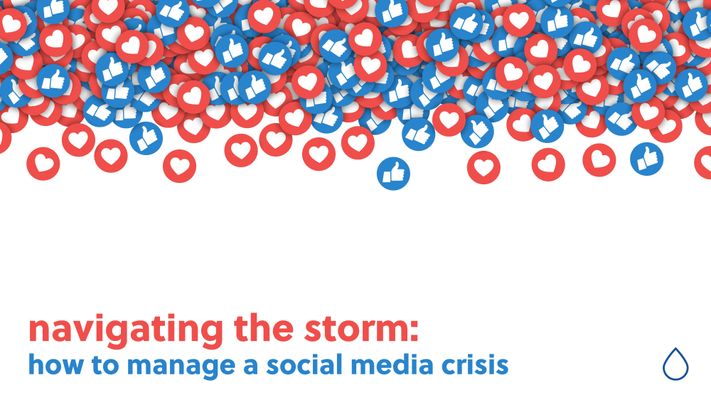Navigating The Storm: How to Manage a Social Media Crisis
They say that when "it rains, it pours"... And if you’ve ever had to deal with a social media crisis, you’ll know that feeling. If you haven’t, then you’re in the right place. The good news is that there's rarely a social media crisis that a company can’t recover from. Yes, on social media, things can move at the speed of light. Sometimes it's a viral meme of Bernie Sanders looking rather comfortable at Joe Biden's inauguration or a photo of an egg spreading like wildfire on Instagram. But sometimes, it's a social media crisis that comes out of nowhere. Of course, it's best if you can prevent a social media crisis before it snowballs. But, if one suddenly hits, your best chance of getting through it is by having a solid plan in place. In this blog post, we'll take a look at what potential issues you may face and how to shut them down in the early stages. If that doesn't work, we're going to show you how to navigate and handle a social media crisis. 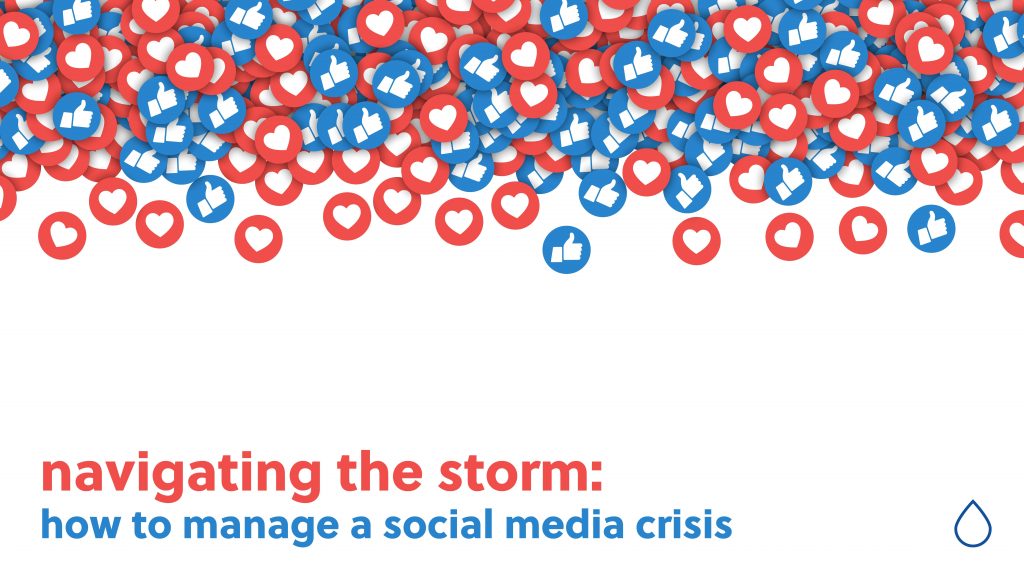
What is a Social Media Crisis?
A social media crisis represents any activity that has the potential to damage your company's reputation or ability to business as usual. However, a social media crisis is far more than just receiving a single negative comment or customer complaint. Signs of an impending social media crisis could be anything from an influx of negative comments/product reviews or to a complete boycott of your company. You should also note that not all social media crises are entirely within your control. They can happen no matter how careful or strategic you are with your social media accounts and messaging. 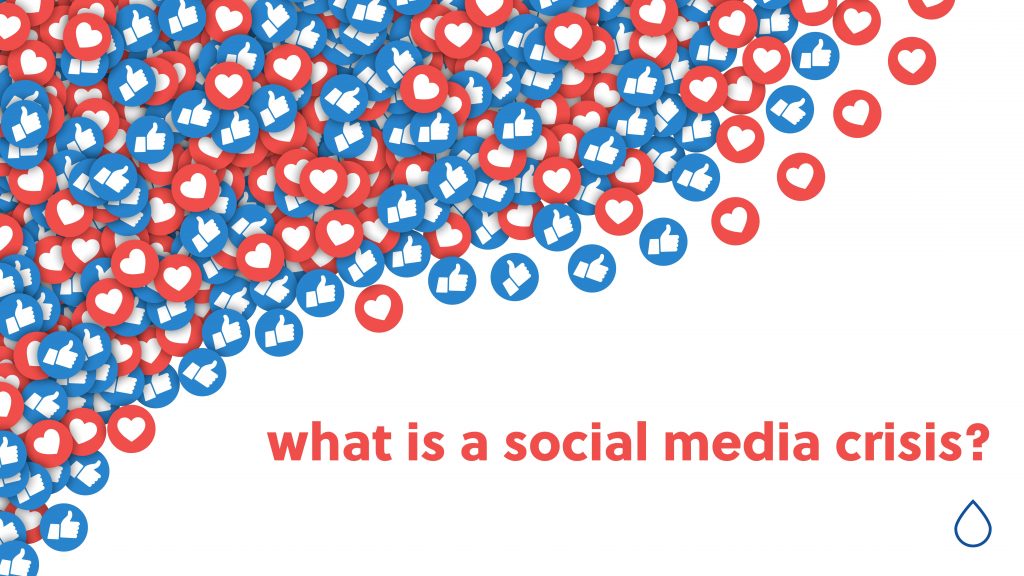 A Website Outage A website outage might not seem that major, but it can become a much bigger problem if you're not paying close attention. Let's say you're right in the middle of launching a new product and your website goes down due to a surge in traffic. Perhaps you've started promoting an attractive offer to your customers on social media, and the links you're using are broken. If this is the case, an influx of negative complaints and @mentions will come your way. Employee Error Some of the worst social media situations begin with an employee making an error posting something inappropriate or offensive. A good (but unfortunate example) of this is when Lockheed Martin attempted to trend jack onto #WorldPhotoDay back in 2018. The world’s biggest supplier of military-grade weapons asked twitter users to post a photo of one of their products. We’re not too sure what they were thinking, but the now-deleted Tweet read: “Do you have an amazing photo of one of our products? Tag us, and we may feature it during our upcoming #WorldPhotoDay celebration”. Now, this Tweet might have actually generated a bit of engagement but a few hours after it was published a news story broke out that one of their bombs injured in a group of civilians in the Middle East. If this doesn’t sound bad enough, the company decided that the best strategy was not to respond at all. All they did was delete the Tweet. Not the best way of handling things right? Product Criticism Your social media channels serve as a mouthpiece for your brand online. If you launch a new product and it doesn't deliver or receives some negative press coverage, social media is where you're going to take the brunt of the criticism. Global Events It's fair to say that we're living in unprecedented times and as a result, need to be prepared for anything. The crisis efforts we're seeing from businesses in response to COVID-19 is proof of that. From global tragedies to pandemics, you need to be aware of current events and ensure your company responds tastefully to avoid offence. In some cases, this will mean halting your social media activity or shifting your strategy's focus. But in other cases, your social media channels might be the best way of communicating with your customers and followers.
A Website Outage A website outage might not seem that major, but it can become a much bigger problem if you're not paying close attention. Let's say you're right in the middle of launching a new product and your website goes down due to a surge in traffic. Perhaps you've started promoting an attractive offer to your customers on social media, and the links you're using are broken. If this is the case, an influx of negative complaints and @mentions will come your way. Employee Error Some of the worst social media situations begin with an employee making an error posting something inappropriate or offensive. A good (but unfortunate example) of this is when Lockheed Martin attempted to trend jack onto #WorldPhotoDay back in 2018. The world’s biggest supplier of military-grade weapons asked twitter users to post a photo of one of their products. We’re not too sure what they were thinking, but the now-deleted Tweet read: “Do you have an amazing photo of one of our products? Tag us, and we may feature it during our upcoming #WorldPhotoDay celebration”. Now, this Tweet might have actually generated a bit of engagement but a few hours after it was published a news story broke out that one of their bombs injured in a group of civilians in the Middle East. If this doesn’t sound bad enough, the company decided that the best strategy was not to respond at all. All they did was delete the Tweet. Not the best way of handling things right? Product Criticism Your social media channels serve as a mouthpiece for your brand online. If you launch a new product and it doesn't deliver or receives some negative press coverage, social media is where you're going to take the brunt of the criticism. Global Events It's fair to say that we're living in unprecedented times and as a result, need to be prepared for anything. The crisis efforts we're seeing from businesses in response to COVID-19 is proof of that. From global tragedies to pandemics, you need to be aware of current events and ensure your company responds tastefully to avoid offence. In some cases, this will mean halting your social media activity or shifting your strategy's focus. But in other cases, your social media channels might be the best way of communicating with your customers and followers.
Navigating the Social Media Storm
The very nature of a social media crisis has to be handled carefully. Only a strategic approach will work, so if you follow what we're about to discuss, you'll be able to resolve a crisis with very little or no damage to your brand identity.
Build a Social Media Crisis Team
Imagine a minor issue spirals out of control. Instead of employees panicking and trying to put the fire out, you need a crisis team that will be empowered to take immediate action. We know that social media falls under marketing, but the roles should be divided between senior leaders, human resources, customer service and sales. Make sure your crisis team has at least one member from each department. The roles should be assigned like this:
- The content gurus. As the team's creative content writers, they'll be responsible for owning the messaging and tone of voice that's published across your social media channels.
- The strategists. This will be the team leading the crisis management plan and ensuring that everyone involved remains on target. They should also be the ones that publicly speak to the media/execute an offline PR strategy.
- The data analysts. During a crisis, the data analysts should continuously monitor your social media channels for company mentions, related keywords and comments that need attention.
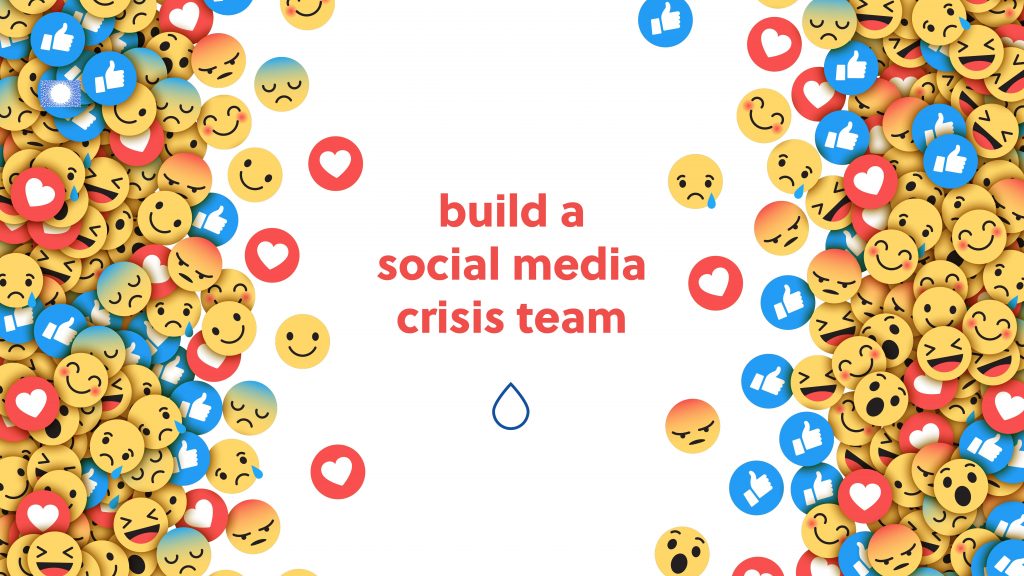
Come Together and Evaluate Your Company Values
If you get hit with a social media crisis, you're unable to control how your customers will react or what they say. But you what can control is your messaging and the way you respond With a proactive social media crisis team, you can evaluate your company values to ensure your messaging is consistent across all platforms. Communicating your company's values authentically and apologetically is key to regaining your customers' trust. Although you can't prepare your specific responses, your team can get together and go over the company’s values, including your vision, mission and culture. However, instead of spending your time on technical competencies, focus on the characteristics that make your company unique and special. Two values that you should drill down on are integrity and accountability because they both take a proactive stance in retaining happy customers. Whatever your company’s values are, they must be reflected in every post and comment you respond to during a crisis. This will minimise your customers from turning away from your company and remind them why they chose you over a competitor in the first place.
Create a Social Media Communications Guideline
A social media communications guideline is a living document for your company's social media usage. It outlines your channels, how they should be managed and how your employees should use them, both professionally and personally. Social media is constantly changing. Platforms and functionality change so your social media communications guideline can't just sit in a draw or get left on a Google Doc. It also shouldn't matter if the person reading it is a new employee or experienced manager in the midst of a social media crisis. The document needs to be straightforward and easy to act on. The details included in your document will vary based on factors such as your industry and company size. But here the 3 areas that you must include:
- Tone of voice guidelines. Do you maintain a pre-defined tone of voice, or do your employees get too "tongue and cheek"?
- Privacy guidelines. This needs to include how employees should interact with customers, and when conversations need to move to a private channel.
- Copyright guidelines. Never assume that your employees know how copyright law applies online.
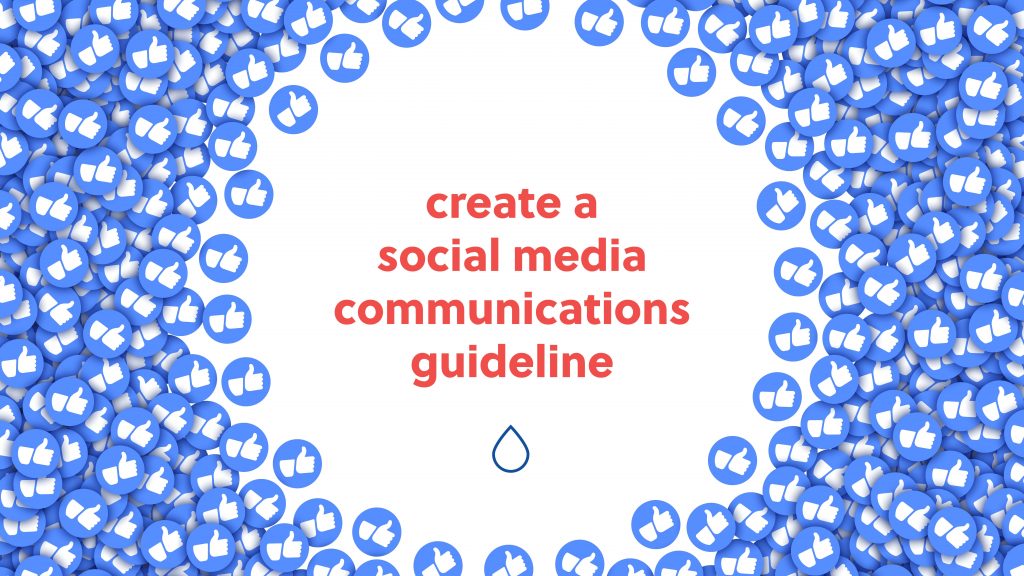
Pump The Breaks On Any Scheduled Content
Nothing says “we don’t care” more than trying to carry on as usual amidst a social media crisis. If your customers have had a nightmare over the weekend trying to use one of your products which has, in turn, has caused a stir on social media, the last thing they’ll want to see on a Monday morning is a Tweet like this: “#Happy #Monday everyone❗ How was your #weekend❓?” This might seem minor, but incidents like this can quickly exacerbate a sensitive situation and make your company look even worse. The best thing you can do in a crisis situation is to pump the breaks on any scheduled posts. You'll also want to halt any influence marketing activity you may have going on too.
Use a Social Media Listening Tool to Identify Issues
A social media crisis can spread quickly and have a profound negative effect on all your social media channels. Spotting the warning signs in the early stages is key to preventing a damaging reflection on your brand. The challenge with this is being able to monitor all of your channels in a scalable way. The simple (but highly effective) solution is social listening. This tactic involves real-time monitoring of social media feeds for company mentions, comments, trending topics, or competitor activity. The key is to always be proactive when it comes to social media crisis management. If a negative sentiment starts to surround your brand, a social media listening tool can notify your team so they can take action before it turns into a full-blown crisis. They could either respond to individual comments and mentions or assign specific issues to a employee who is experienced with handling a particular matter. There are many social media listening tools that you can choose from, but don’t waste your time trying to find the best one. Here are a few that we highly recommend. 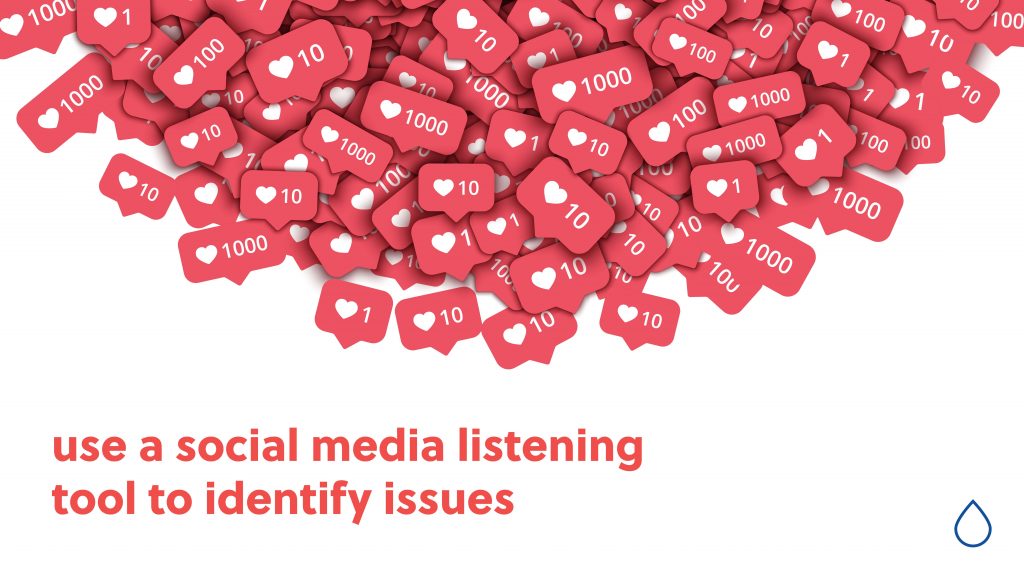 HubSpot With HubSpot, you have the power to monitor social media interactions easily. You’ll also have the tools to actively manage day-to-day conversations, follower engagement and listen in to specific/targeted audiences. What this means for you as the user is that you’ll be equipped to manage your entire social media strategy from one location. You also don’t need to worry about going on specific social media platforms to respond to your followers. Instead, you can engage and interact with them within HubSpot’s dashboard. Pretty nifty right? Falcon.io Falcon.io is a convenient, all-in-one social media management platform that is perfect for small to medium-sized businesses. The software has capabilities relating to social listening, scheduling/ publishing, paid advertising and analysing all aspects of your social media presence. Falcon.io also makes it really to easy segment and target your followers for customised campaigns. Keyhole Keyhole is a social media management platform that’s been specifically designed for Instagram and Twitter. It allows you to track comments, mentions, hashtags and user that you wish to keep an eye on. Of course, tracking certain users sounds a little creepy, but if some contribute to a crisis more than others, this feature can be really handy. Additionally, Falcon.io has this super cool heatmap feature that shows how your social media engagement differs worldwide. This will give you a deeper insight into who your followers are and how to effectively interact with them no matter where they are. Mention Mention is able to track millions of content sources and monitor brand mentions across 42 languages. You’re able to select what social media content you’d like to tune into so you’re only paying attention to what matters to your brand. There’s also a competitive analysis tool which allows you to compare your social media presence to your direct competitors. This is really handy because it means you can ensure that your content is relevant and unique compared to others.
HubSpot With HubSpot, you have the power to monitor social media interactions easily. You’ll also have the tools to actively manage day-to-day conversations, follower engagement and listen in to specific/targeted audiences. What this means for you as the user is that you’ll be equipped to manage your entire social media strategy from one location. You also don’t need to worry about going on specific social media platforms to respond to your followers. Instead, you can engage and interact with them within HubSpot’s dashboard. Pretty nifty right? Falcon.io Falcon.io is a convenient, all-in-one social media management platform that is perfect for small to medium-sized businesses. The software has capabilities relating to social listening, scheduling/ publishing, paid advertising and analysing all aspects of your social media presence. Falcon.io also makes it really to easy segment and target your followers for customised campaigns. Keyhole Keyhole is a social media management platform that’s been specifically designed for Instagram and Twitter. It allows you to track comments, mentions, hashtags and user that you wish to keep an eye on. Of course, tracking certain users sounds a little creepy, but if some contribute to a crisis more than others, this feature can be really handy. Additionally, Falcon.io has this super cool heatmap feature that shows how your social media engagement differs worldwide. This will give you a deeper insight into who your followers are and how to effectively interact with them no matter where they are. Mention Mention is able to track millions of content sources and monitor brand mentions across 42 languages. You’re able to select what social media content you’d like to tune into so you’re only paying attention to what matters to your brand. There’s also a competitive analysis tool which allows you to compare your social media presence to your direct competitors. This is really handy because it means you can ensure that your content is relevant and unique compared to others.
React to Comments and Mentions Quickly
About 12 hours is the standard when it comes to responding to comments and mentions on social media. However, when it comes to dealing with a social media crisis, you must react much quicker than that. The sooner you're able to react to any sort of negativity or controversy, the better. This could mean offering apologies or deleting posts. It really depends on your situation. Either way, being reactive on social media all starts with keeping a close eye on your notifications. This doesn't mean you need to stare at your social feeds 24 hours a day. There is now a range of social media management tools that can notify you when you get engagement spikes so you can spot an impending crisis and respond quickly. We recommend using BuzzSumo, Sprout Social or Mention.
Engage With Users, But Don't Argue With Them
Once you've sent out an initial crisis response, it's time to get your team working on more in-depth messaging. This could mean drafting and distributing an official statement or press release. But, since we're talking about a social media crisis, issuing statements isn't going to cut it. You need to engage with the users who are saying negative things about your company. You need to keep your messaging short and avoid getting into lengthy public discussions relating to the crisis. Instead, try moving conversations to a private channel. Of course, some customers will try to argue with you until you stop responding to them. When it becomes apparent that you're not making any progress, simply acknowledge their frustrations. Getting into an argument isn't going to improve the situation. so you've just got to bite your tongue and take the high road.
Evaluate The Impact
Whether you deal with a social media storm or a catastrophic hurricane, you should take the time to look back at the crisis to determine its broader impact on your company. Using documented data from a social listening tool can prove extremely handy at this point as it can be turned into valuable insights. By collecting enough data, you'll be able to compare what your "crisis week" looked like compared to a typical "social media week". The results will help you plan for any future events. Key metrics and trends you should look for include:
- Audience location. Whilst it might have felt like a minor crisis to your company, it will have amplified across the world on social media. That's why it important to understand where the problem first came about.
- Follower trends. By measuring the number of new and current followers, you can determine whether you lost or gained some during the crisis.
- Website traffic from social. During a crisis, you'll probably find that your website will have gained just as much traction. But, it's always worth checking how much of it came from social media.
- Average response times. As we've highlighted, timely communication is key to resolving a social media/social PR crisis. Take the opportunity to see how reactive your team were in following up to customers questions.
- Search volume patterns. With tools like Google Trends, SEMrush and Ahrefs, you can see how many times your crisis-related words were used across different countries.
- Volume of inbound conversations by sentiment. Analyse the number of direct messages, comments and mentions that your handles received during the crisis.
We're a Digital Marketing Agency Specialising in Social Media
Let us introduce ourselves. We’re a full-service digital marketing agency based in Southend-on-Sea and love all things social media. We tie together key digital marketing tactics, including organic posting and social media advertising, as well as paid search, content marketing, custom graphics, infographics, videos and more. Taking this holistic approach to digital marketing allows each channel to work in tandem to drive website traffic, increase conversions and enhance brand awareness for your business. 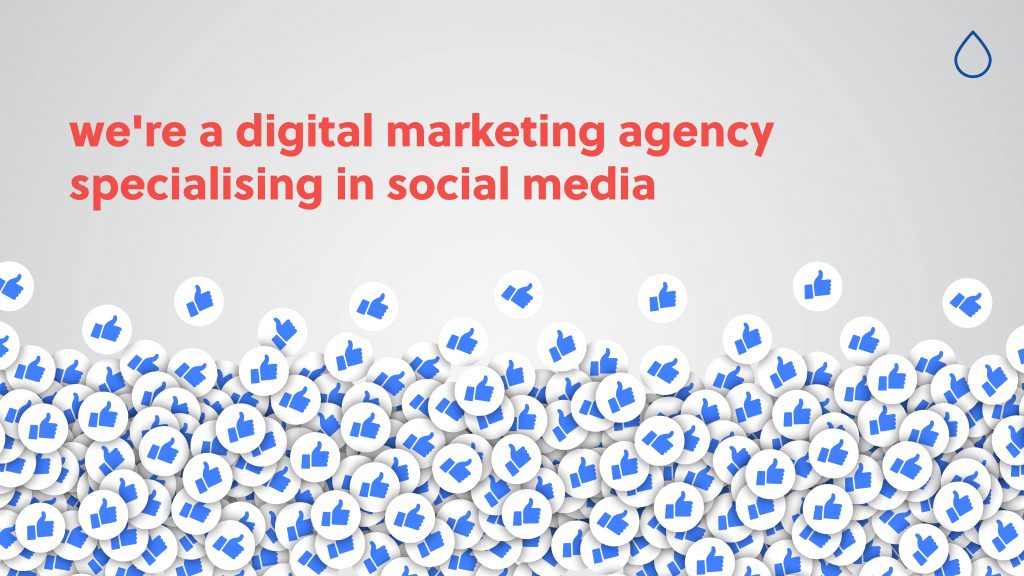 If you would like to find out how we can effectively manage your channels even in times of crisis, please get in touch with our expert social media team. Call us on 01702 619 139 or visit our contact page today!
If you would like to find out how we can effectively manage your channels even in times of crisis, please get in touch with our expert social media team. Call us on 01702 619 139 or visit our contact page today!


